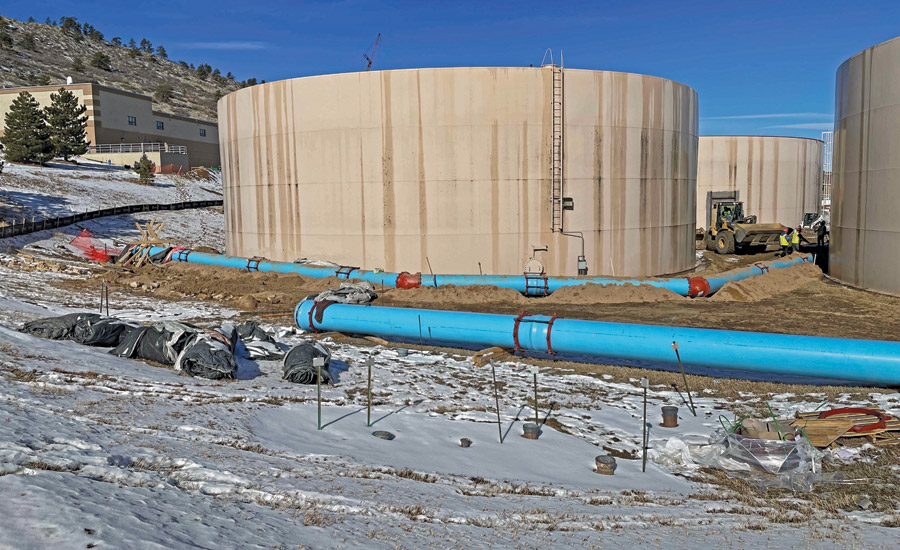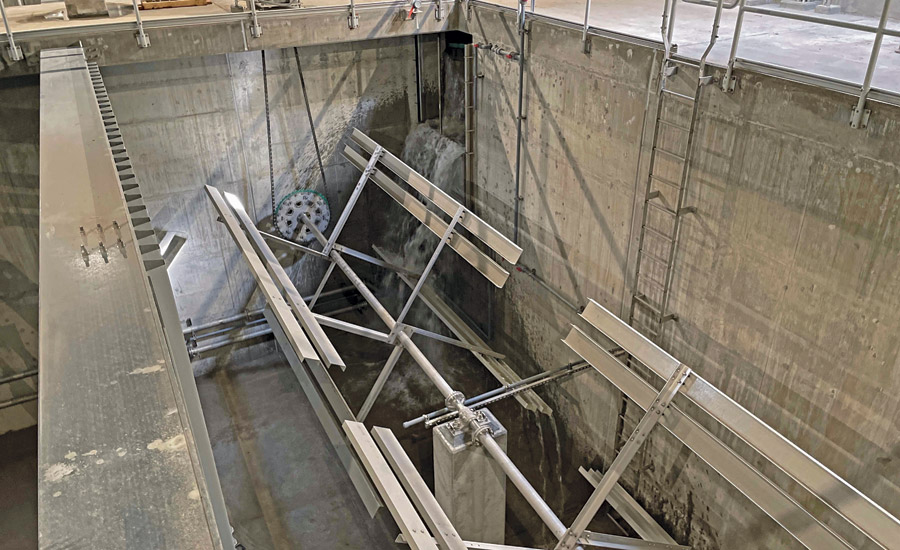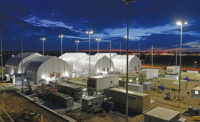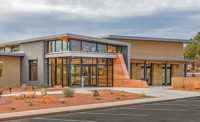Soldier Canyon Filter Plant Expansion
Fort Collins, Colo.
BEST PROJECT
Submitted By: Ditesco
Owner: Soldier Canyon Water Treatment Authority
Lead Design Firm | Structural Engineer: Stantec
General Contractor: Garney Construction
Civil Engineer: Houston Engineering Inc.
MEP Engineer: BCER Engineering Inc.
Owner’s Representative | Resident Engineer: Ditesco
Accelerating population growth in the filter plant’s service area led to its first major capacity upgrade in nearly 20 years. To increase capacity to 60 million gallons per day from 45 million, the project included construction of two new flocculation and sedimentation process trains, rapid mix piping, a 1.5-million-gallon chlorine contact tank and the expansion or adjustment of more than 30 different yard pipelines up to 72 in. in diameter.
Existing facilities underwent significant improvements as well, including new chemical batching and feed systems and replacement of an emergency chlorine scrubber.

Photo by Jason Wooldridge, Ditesco
Rugged site topography presented a significant challenge to design, access and construction-phasing plans. The north treatment train was a combination of cast-in-place concrete basins and mechanical spaces, a precast second story and roof system and a preengineered metal building.
This building approach, as well as the color selection, matched the existing plant aesthetic while updating portions of the design to optimize access and use of space.
From the outset of the project in 2019, the project team and owner continually sought ways to incorporate additional work within the original budget. As risk items were addressed or eliminated, contingency and cost savings were applied to incorporate an additional $2 million worth of small projects that will enhance operations and long-term maintenance. For example, the project team saved nearly $250,000 in construction costs by reconfiguring an existing influent diversion structure instead of building a new one.

Photo by Jason Wooldridge, Ditesco
“Wish list” items identified and prioritized during preconstruction were then implemented into the job schedule as the expertise of work crews became available to maximize invested funds. Among the additional work items was installation of a 42-in.-dia redundant plant influent line from a nearby reservoir.
The expansion touched virtually all of the plant’s processes, and plant coordination meetings were key to efficiently scheduling work and adjusting to operational needs. A complex phasing strategy involved multiple temporary plant and process shutdowns to accomplish various work items in interconnected process areas as well as construction of a new bypass line to maintain finished water transmission to customers while work was underway on storage tanks and supply pipelines. Throughout construction, the plant delivered seamless service to customers, with no impact to water quality.

Photo by Jason Wooldridge, Ditesco
During start-up, the project team met daily to review goals, procedures, roles and risks. This approach allowed all parties to engage in the process and agree to the methods and work plan. As with any plant start-up, the need for course corrections could not be eliminated. However, the project’s coordination tools helped the team adjust quickly, completing the process prior to high-demand season and before the contractual deadline for substantial completion.





Post a comment to this article
Report Abusive Comment